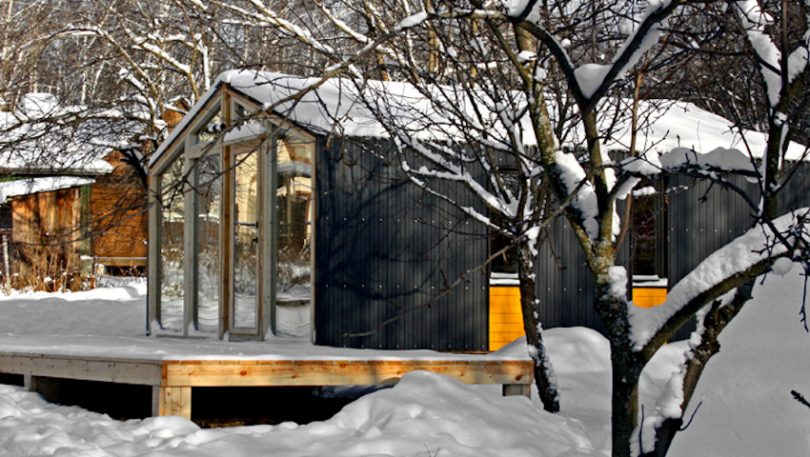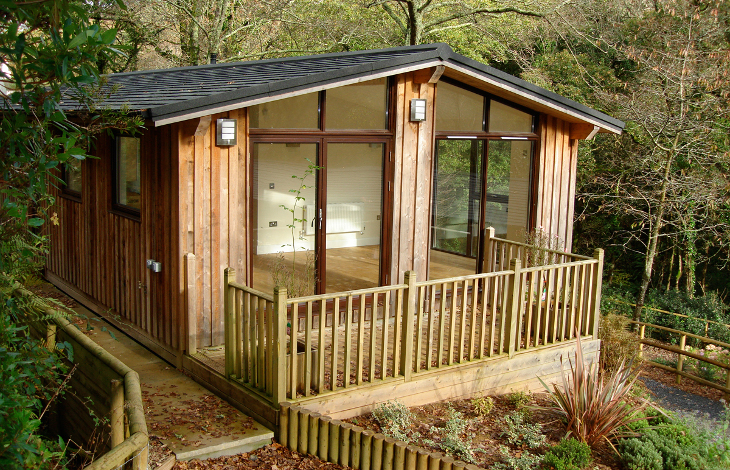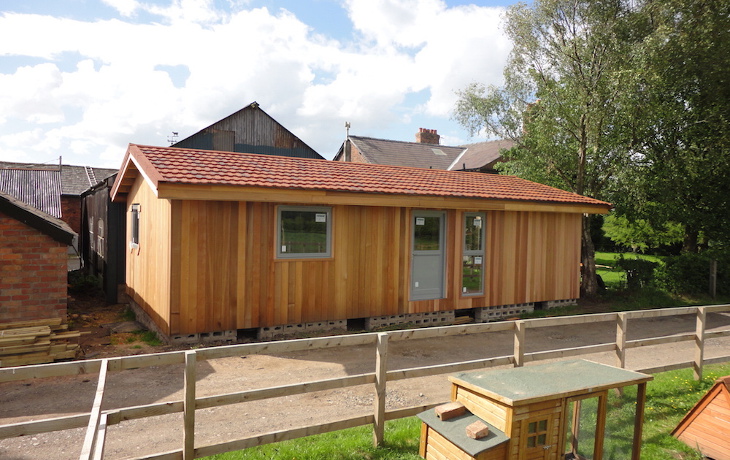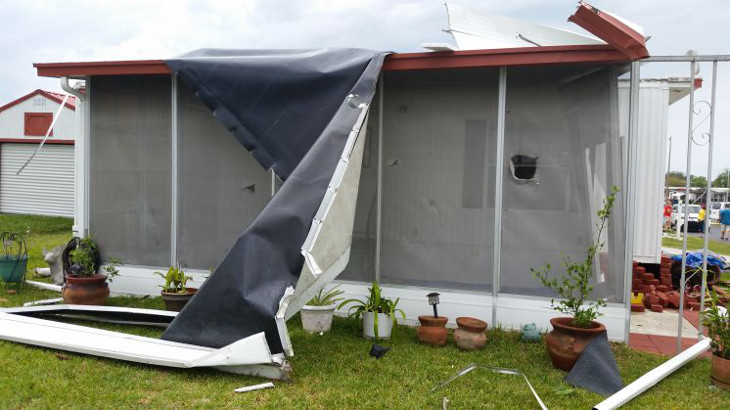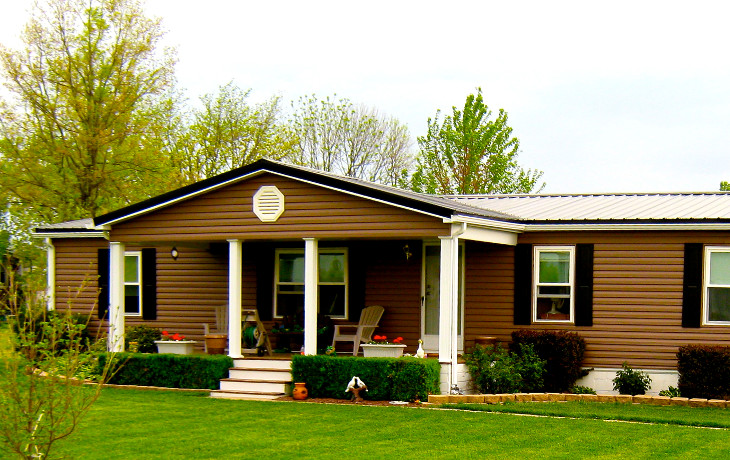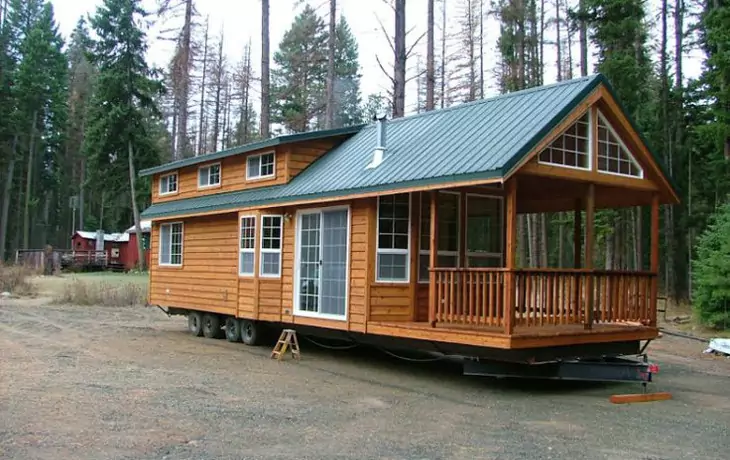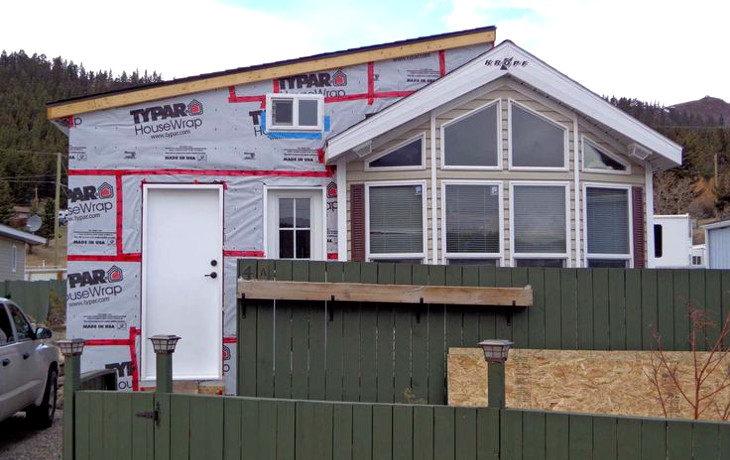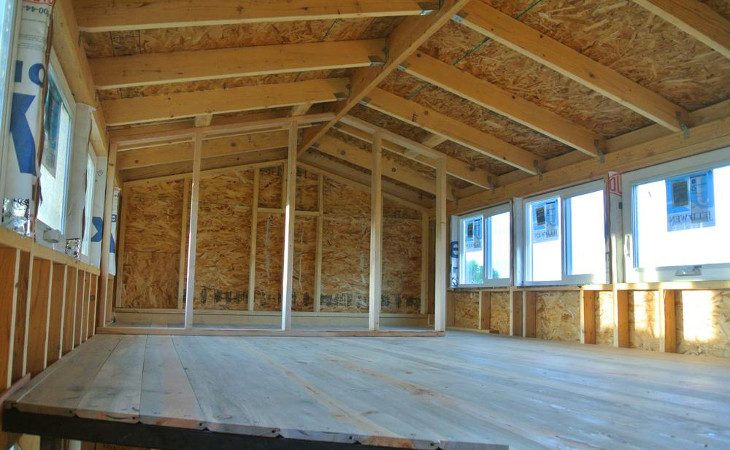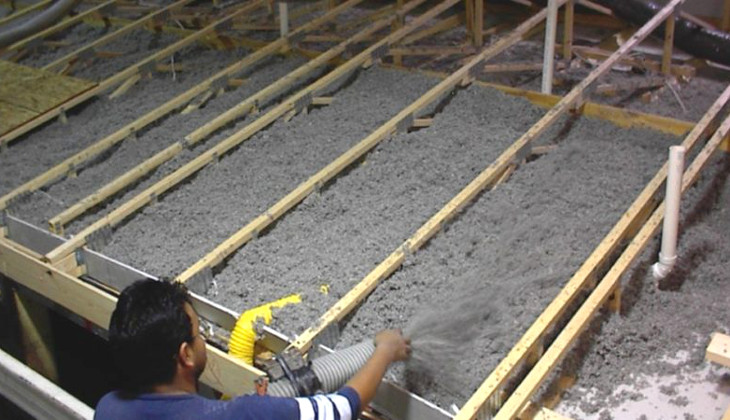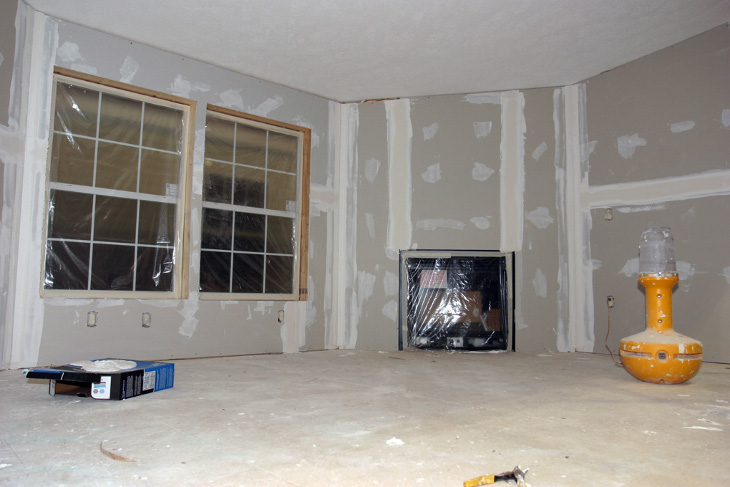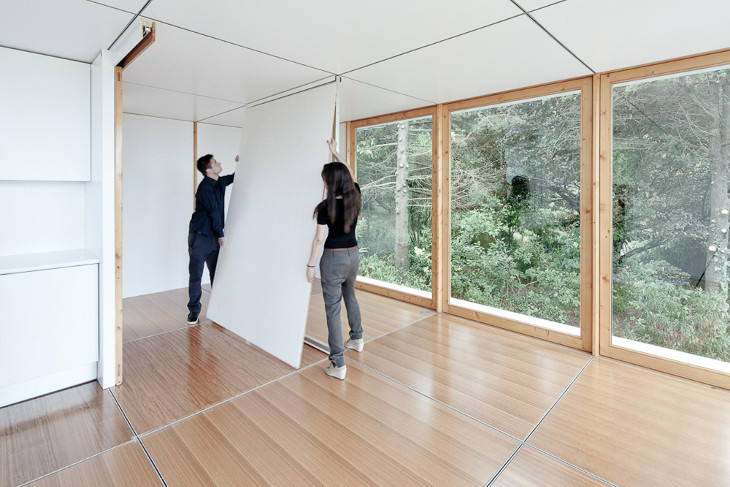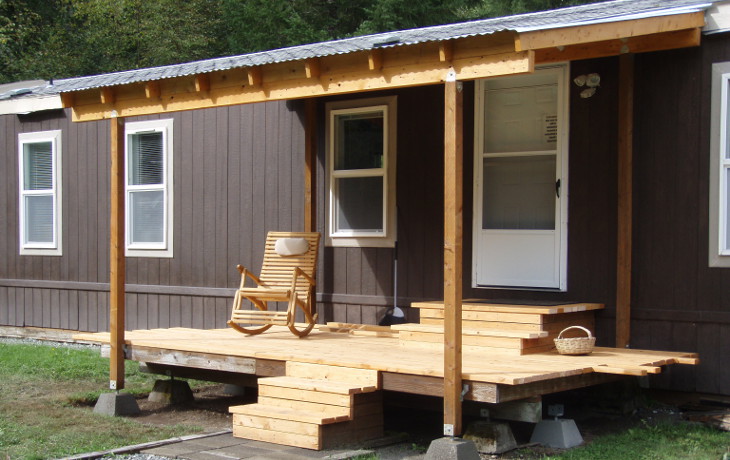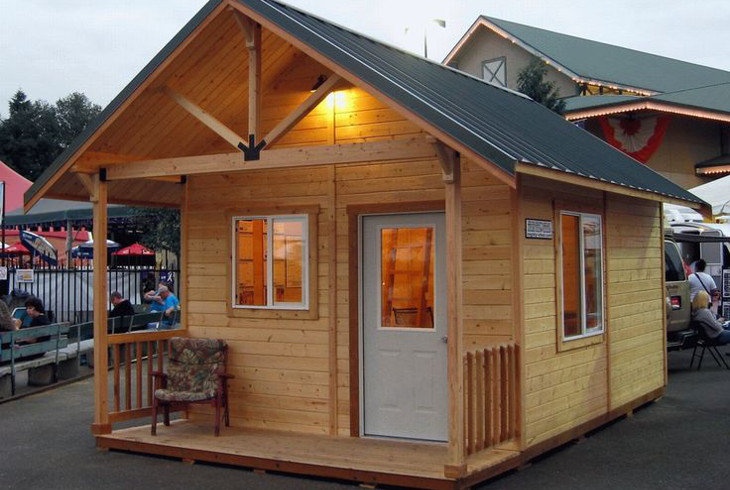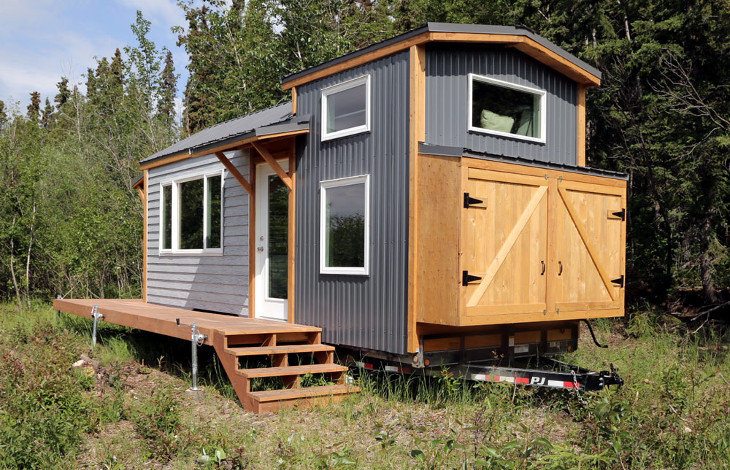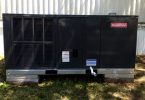Building a mobile home can be a very exciting project for DIY enthusiasts and many have already taken up the challenge. There are several reasons to want to build your own mobile home.
It gives you better control over the final result and if you execute everything correctly, you can save a lot on labor costs. However, for many people who decide to go along this path, it’s all about the challenge of taking on a project like this and ending up with an awesome result.
There are several approaches to building a mobile home. If you’re all about speed and a guaranteed result, you can start building from a kit. If you have the time and skills and want greater flexibility, you can also start building from scratch.
Building from a Kit
Companies such as Zip Kit Homes and Discovery Dream Homes provide mobile home kits that you can assemble on your own. The company provides you with a set of materials that have been pre-formed or pre-cut to ensure they fit seamlessly during assembly.
Your job is therefore to assemble the materials provided. There may be some cutting and drilling still required on your part but this is usually limited.
Mobile home kits for self-assembly usually provide you with only the shell of the house. This means there is still much that you have to do to have a house that is livable.
Some manufacturers will have their own home designs that you can choose from although others can also make a custom kit for you based on your specifications. This allows you to end up with something that is perfect for your needs.
The pros of building from a kit
- Speed: Compared to doing everything from scratch, building from a kit should be much faster because much of the material has been prepared for you and all you have to do is assemble it correctly. The materials come with a blue print that you can follow and the different materials are also marked with unique numbers so you know the exact orientation of every part. Some kits can be put together by a professional builder in just a few days.
- Accuracy: According to moneycrashers.com, the parts of a mobile house kit are designed and cut-out in a factory. This fitting design is important because any spaces could interfere with insulation. Any gaps in the structure could allow draughts into the house resulting in lower energy efficiency.
- Compliance: Although you can contribute to the design, much of the work prior to the assembly will be handled by professionals. This lowers the possibility that the house will be structurally unsound or have some other issue once it’s done. Houses, including mobile ones, are required to adhere to specific guidelines in order to receive a certificate of occupancy from the local authorities according to Wikipedia. When the design and materials are prepared by professionals, they know what to do to make the house compliant with the laws.
- Simplicity: Many mobile house kits, such as those from Jamaica Cottage Shop, are designed so they can be put together even by people with little technical know-how. Even if you’re building a tiny home, building it from scratch requires a lot of considerations and calculations. A kit, on the other hand, comes with ready materials and a professionally prepared plan that you can follow from start to finish.
The cons of building from a kit
- Limited flexibility: Making changes to the kit home isn’t always possible. For example, Zip Kit Homes allow you to change the sizes of rooms, add/delete closets etc. but you can’t change the overall dimension of the house. Making certain changes to a house will mean having to do some new calculations or bring in an engineer to ensure the structure is still sound. To a manufacturer, this is hardly ideal.
- Material damage can be costly: The materials that you’ll receive from the manufacturer are pre-cut and shaped so they can fit in a particular way. If any part of the timber frame is damaged, you’ll have to go back to the manufacturer for an exact replacement and this can be expensive.
- You miss out on part of the experience: For those who are really out to build their own mobile home, building from a kit may deny you a part of the experience. You won’t enjoy the license to create something that is 100% to your liking.
Building a Mobile house from scratch
For those who are particularly handy, the challenge of building a mobile house from scratch is particularly appealing. Many people have taken up this challenge with varying results.
There are many written and video guides that you can find on how to build a mobile home. While the steps may vary depending on the design, features and location of the home, there are certain basic steps that will be covered.
Designing the House
The design is a very critical stage of building any house (according to the houseplanshop.com). The design will dictate the direction that the construction process will take and how well the final design will work. When designing your house, you have to take into account the following:
- The design must be functional: You’ll need a house that can meet your needs. Space planning is crucial to ensure that you have room for everything you need in your home and you should also ensure that you balance between storage and living space (according to freshome.com).
- The design must match your budget: As you design your house, take into account the amount and type of materials you’re using and the amount of work needed to achieve the design you want. All this will affect your budget.
- The design must be safe: You may need to work with other experts such as structural engineers to ensure that the house you’re constructing is safe. This means it should be structurally sound.
- Design with utilities in mind: Depending on the type of utilities you’re planning to make use of, it’s important to take their layout into consideration. You’ll want to run the utilities through the shortest route into the house so you have to think about the point of entry. You’ll also not want utility lines to be visible inside the house so you have to create space for them either underneath the floor or overhead.
- Towing Vehicle: This is all about the size of the home you’re building. Do you want it to be light enough to be towed by a small car or are you looking for something that will require a truck to move from one location to another?
Getting a Trailer Frame
This is the defining factor in a mobile home and without it, your mobile house will not be as mobile as you want it. Building a trailer frame from scratch is a demanding job and perhaps an unnecessary one. Most people simply buy old trailers that are no longer being used by the owners and use the chassis from this.
The larger the mobile home you’re building the larger the frame you’ll need. The frame has to be able to take the weight of the home plus everything inside.
Building the Shell
The shell of your DIY mobile home should be built on top of the trailer frame if you want to avoid having to move it later on. This means that before you start building the shell, you have to properly support the trailer frame.
According to (tinyhouseblog.com), the shell of your mobile home is the basic structure consisting of the roof, walls, and floors. This may be the most demanding part of the build and you may want to bring in somebody with plenty of experience doing woodwork/metalwork. You’ll need to be handy with tools such as saws, drills, nail guns etc.
You can decide to measure and cut your materials as needed by the build. However, if you have a very accurate design that you trust completely, you can instead prepare all the material that will be required first. This means:
- Cutting materials into the right shapes and sizes
- Cutting out the spaces for doors and windows
- Marking the materials as you prepare them so you’ll know what part goes where etc.
Once you’ve prepared the materials for the shell, the next step will be assembling the materials on the frame. To ensure the construction process is safe, start with the parts that will be bearing the weight of the house. This means any load-bearing walls, roof frame etc.
Once these parts are in place, you can then add the wall siding, the actual roofing material and other parts used to cover the house. When you finish building the shell, you should end up with a structure that looks a lot like your finished house.
Working on the shell of the house requires the use of hand tools so ensure you’re properly trained to handle these before attempting to use them. Alternatively, you can get a professional to build the shell for your design.
The shell is completed by putting in the doors and windows. You can paint before or after putting in the windows and doors.
Insulation and Utilities
Your mobile home will almost definitely require some form of insulation on the inside walls unless you’re constructing a log cabin. Thick logs are very energy efficient so you don’t have to worry too much about heat escaping.
According to howstuffworks.com, insulation should be put on the inside of any part of the house that will be in direct contact with the outside environment. There are many different materials that can be used for insulation with fiber glass being quite popular.
You can also use Rockwool, cellulose, vermiculite, perlite etc. Properly installing your insulation is the key to better energy efficiency and comfort during cold weather.
The insulation goes between the subfloor and the actual floor, between the internal and external wall and between your attic and the roof. You should run your utility lines on the inner side of the insulation. In the case of plumbing, this will ensure the pipes are kept warm by heat from inside the house during cold weather.
Most people call in professionals to handle the plumbing and electrical wiring. This kind of work has to be inspected later by someone from the local council to ensure that the house is safe.
Interior Fitting
This is when the interior of your house really starts to take shape. Fitting the interior involves putting in the shelves and cabinets, putting in your kitchen, fitting the bathroom features i.e. toilet, shower, tub etc. You’ll also be putting in the lighting fixtures. If you had planned for built-in furniture, this is also when you should install these.
This is not the time when you should be thinking about the types of features you want in your house. Such considerations should have been made while designing the house. Space will probably be limited in your build and you should already know how much space these features will take inside the house.
The type and extent of fittings will depend on your needs and taste. Some people prefer a home with only the basics while others like to go all out and go for all the features and trimmings they can fit into their home. As long as it all fits in the design and your pocket, it should be fine.
The Upside of building from scratch
- Freedom when designing: You’ll have more freedom in designing the house so you always end up with the house you want.
- Cheaper: Depending on how good you are with tools, the house could cost you less since you won’t be incurring labor costs. You could also save on material costs by going for recycled materials. The local junkyard can be a great source of quality material at no more than the cost of loading it in your pick-up and transporting it to the build site.
- It’s a good hobby: If you simply wanted a house then this may not mean as much but for someone looking for something to keep them occupied, this kind of project can be interesting and rewarding. At the end of the project, you will have learned multiple skills that you can invest in or share with others.
The Downside of building from Scratch
- Time Consuming: Depending on how much labor DIY you have at your disposal, this type of build can take you a long time. Many people take a year or longer especially if they’re doing the work without the help of tradespeople.
- You’ll still need expert help: Some parts of the job will probably require the contribution of another expert and this will cost you some money. This may be an architect, structural engineer, electrician, plumber, carpenter, welder etc. These experts have certain skills that may need certification or take years to learn.
- You will make mistakes: If this is your first time taking on this type of project, the probability of making a mistake is almost 100%. This could be a small mistake that sets you back a day or two but it could also be a mistake serious enough to send you back to the beginning. A good way of avoiding making serious mistakes is a thorough design process with the input of experts or people who have worked on this type of project.
Working with a Pre-Built Shell
This approach to building your own mobile home will save you from many of the challenges you encounter when you build from scratch. Working with a shipping container is one of the latest trends for those who want to build from an existing shell.
You can buy a shipping container and do the cutting yourself or you can buy a container that already has the doors and window in place. When you have a pre-built shell, you can simply put it on top of the trailer frame and continue the work starting with the insulation and utilities just as you would when building from scratch.
Another trend that you can take advantage of is to convert a bus or a van into a mobile home. This is much simpler since most of the work will be fitting of the various features to the interior. You’ll still need to do some designing so you know how best to make use of the little available space.
Working with a pre-built shell spares you from the heavy work required in building a shell from scratch but it will cost you a bit more and could limit your design.
For the result or for the Challenge?
For those who want to build their own mobile home, the best approach will depend on whether you’re only after the result or whether you’re also looking for a challenge. If you’re mostly interested in the final result, you can just order a mobile home kit.
Building from a kit is more of an assembly process. All you have to do is assemble the different parts as stated in the instructions.
If you’d like something slightly more challenging, you can get a pre-built shell and convert it into your mobile home. You can do this using a shipping container or you can look for a company that makes and sells these shells. Alternatively, you can empty out a bus or a van for the same purpose.
If you’re particularly handy and you’re looking for a challenging build that will keep you occupied for months on end, building everything from scratch will definitely suit you.

